All wood species have extractives or chemicals in the wood that can make the wood rot resistant or weather resistant or even tasty. Maple Syrup is one tasty example of a wood extractive. While some extractives are useful when actually extracted from the tree like the aforementioned Maple Syrup or Turpentine, others remain part of the wood itself to give it the working and performance characteristics that define it. Most importantly, is how these extractives can effect things like finish or glue or color as we work with the woods.
Weeping Sap
Some wood species, especially softwoods, have a high volume of sap and resin. While the wood is green this sap is flowing readily. As it is dried, the sap hardens and in some cases actually crystallizes. This can make the wood brittle and especially hard on blades when we cut it. This is especially prevalent in reclaimed materials like old growth Pine species where years and years of exposure has changed the working properties of the wood. In addition to decades of dirt (silica), the super hard sap can eat up the blades as the lumber is milled and cut to size. The more brittle nature can be split prone as it is drilled. The hardened sap can also repel some finishes and a primer coat may be needed to seal in the sap and increase adhesion for subsequent coats.
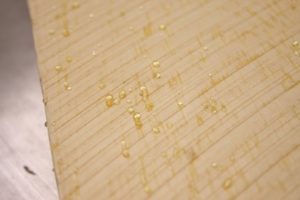 Other, “fresher” woods can be dried and yet they show weeping stains showing up days and months later. Drying wood is not homogenous and the interior of a board always has a higher moisture content. So as a board is milled this can release some of the resin that has not been set in the interior. Water and sometimes just heating up the board can cause the sap to flow. Imagine putting Spanish Cedar or even Western Red Cedar siding up on a wall and then having the afternoon sun bake it for a few hours. Suddenly that previously immaculate Cedar is patchy with weepy spots as the sap rises to the surface. Spanish Cedar is so notorious for this that we dry it to a higher temperature than any other species in order to set this sap. This means a longer temperature ramp up time in order to not damage the wood and therefore much longer time in the kiln before the boards are ready for sale.
Other, “fresher” woods can be dried and yet they show weeping stains showing up days and months later. Drying wood is not homogenous and the interior of a board always has a higher moisture content. So as a board is milled this can release some of the resin that has not been set in the interior. Water and sometimes just heating up the board can cause the sap to flow. Imagine putting Spanish Cedar or even Western Red Cedar siding up on a wall and then having the afternoon sun bake it for a few hours. Suddenly that previously immaculate Cedar is patchy with weepy spots as the sap rises to the surface. Spanish Cedar is so notorious for this that we dry it to a higher temperature than any other species in order to set this sap. This means a longer temperature ramp up time in order to not damage the wood and therefore much longer time in the kiln before the boards are ready for sale.
Certainly the staining is unsightly but it also can wreak havoc on finishes and glues. Weeping sap spots must be removed before trying to glue or apply finish to your boards. Drying a high sap content wood correctly is the first step, but pre-finishing those boards before hanging them is a good idea to help seal in the sap and resin, especially if they will be getting a lot of sun exposure. In most cases any weeping that shows up is a one time thing and it occurs shortly after the board has been planed. In this case, using mineral spirits or Naphtha to wipe down the board can remove this sap. Set the board aside to make sure it doesn’t weep anymore and you should be good to use it. However there are some cases where weeping sap can show up decades and centuries later with reclaimed timbers when a beam that previously was used for exterior framing is brought inside and the sap starts flowing again.
This issue is not just due to sap. Many tropical woods are very rot resistant, which put another way means they taste terrible to the bugs that want to eat it. The high oil content of most tropic species can act much the same way as sap in softwood and continue to leach from the surface. Finish and glue adhesion becomes a major problem in these cases and the wood needs to be wiped down with a solvent to remove the oil and then glue up or finished quickly before the oil can rise back to the surface. And it will come back so wiping down the board needs to happen right before you move on to gluing or finishing.
Stained Decking and Transference
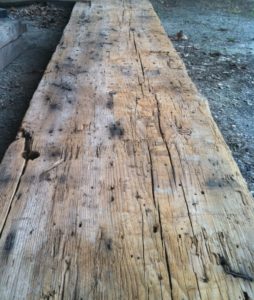
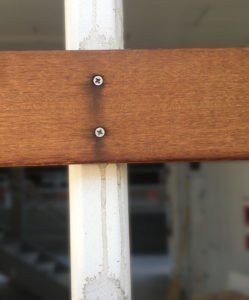
Siding or slats with square bottoms will often show these stained spots underneath where the water has clung until it evaporates leaving behind stains that are nearly impossible to remove without a plane or sander. In these cases a separation or edge treatment is needed between materials that forces tannin rich run off to drop off rather than run down a structure. Washers that step off the slats from the metal substrate or a moulded drip edge that gives the bottom of the board a small surface or drip edge that sheds the water.
In all of these cases, the tannins are dissolved by water and allowed to flow and react to fasteners or salt air or any other particulates found on the boards. So the best defense against tannin staining is to seal the wood with an oil based clear coat or a primer if you will be painting the boards. This blocks the water from every reaching the extractives and making them flow.
Chromophores and Oxidization
OK, I admit I just wanted to say “chromophore”
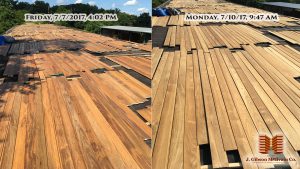
Another radical example is Purpleheart that is a vibrant purple right out of the planer but mellows to a deep red brown over time. Cherry is light pink when milled but deepens to a rich brown pink color. Just about any wood will exhibit this color change and it is important to know that it will go away over time. But that time can be sped up or slowed down. If you sun a board that color change occurs quickly. But if you go from freshly milled board to finished, the color change can take much longer as the finish applied is blocking the oxygen from the chromophores.
How Do We Know?
I could show you lists of woods that are rich in extractives that can cause staining or glue and finish adhesion, but the fact is every wood has extractives. It is part of the chemical makeup. Some species it means nothing in how the wood works. Maple for example has large amounts of extractives but the syrup that carries the same name doesn’t effect the lumber. Walnut has high tannin content yet due to how Walnut is processed and steamed these tannins doesn’t have much effect on the look and working properties of the lumber. But the sawdust and shavings can be toxic to some animals and anyone with a nut allergy. But before we dismiss these species outright a board of Maple or Walnut will come along with an especially high extractive content and any of the above situations can present themselves.
Meanwhile there are other species where the extractive absolutely define the lumber and what it is used for. Teak is the king of marine applications and is practically waterproof because of the high levels of oil and silica in the wood. Many tropical species will be the same with high oil and resin content which is great for bug and water resistance, but can be problematic in all of the above situations I have described.
Non tropical woods can also be highly defined by their extractive. Red Oak is used for making barrels and the high tannin content is what makes whiskey whiskey and red wine red wine. This chemical reaction between the tannin and the alcohol is what creates the flavor. One of my favorites, Tabasco sauce is stored in Oak barrels and aged to get its flavor, relying on the tannins to make the magic happen.
Whether the extractives make the wood species exceptional at what it does or just cause a finishing inconvenience, it is important to recognize the symptoms in the wild and a possible solution to combat it. Just when you thought you had wood movement all figured out, now we have extractives to complicate the issue right? Don’t panic in most cases the fix is easy…before the material is installed. This is why recognizing the symptoms of extractives is important to save you a lot of heartache down the road.

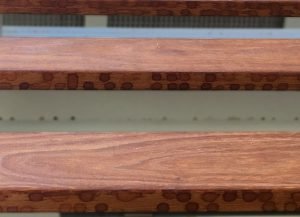
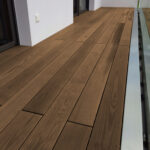
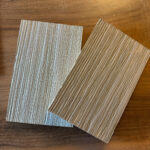
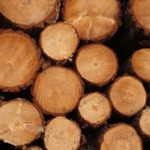
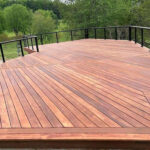
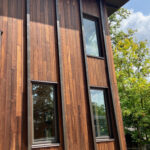
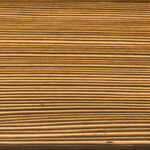


Leave a Reply